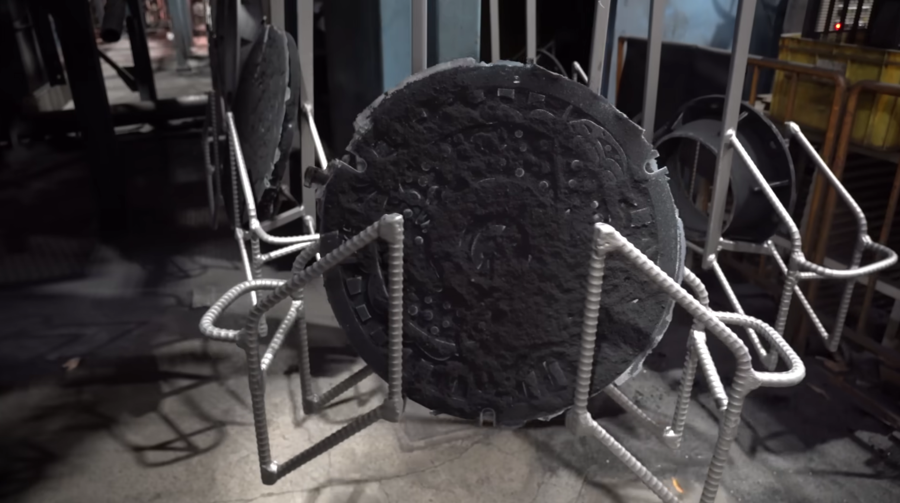Japan’s manhole covers are famous for their city-specific illustrations that traditionally feature local landmarks, festivals, and cultural symbols from where they’re located. The creation of these unique designs is typically done by local artists and craftsmen who are commissioned by the municipalities.
Founded in 1919, Hinode Suido is now the largest manhole cover manufacturer in Japan. This Process X factory video goes behind the scenes at Hinode to see how these heavy-duty pieces of public art and infrastructure are forged. Closed-captioning provides additional information.
At the Hinode Suido factory, Japanese manhole covers are made using a process called sand casting. A mold of the desired design is created with sand and then filled with a metal such as molten iron. Once the metal cools and hardens, the mold is broken away to reveal the finished manhole cover.
The covers are then refined, coated with a protective layer to prevent rust and corrosion, and sometimes painted with bright colors that flood into the designs like icing.
As a final step, the manhole covers are water pressure tested before they’re placed on the street.
Previously: Japanese manhole covers, a factory tour video with narration and lots of examples.
Plus, more sand casting: How bells are made at the Royal Eijsbouts bell foundry.
via Kottke.
Curated, kid-friendly, independently-published. Support this mission by becoming a sustaining member today.





